Magazine
Design incorporates objects, people,
ideas based on the small pleasures of everyday life.
Meet your Beautiful design world with the DDP Design Fair.
-

The Shift from User-centric to Manufacturing-based Perspective
Maezm CEO / Collaboration Curator Shin Taiho“User-centric” or “human-centered” was the most trending topic in the design industry of the 21st century. Designing experiences centered on the user, humans, from the beginning to the end of design, was considered a good design methodology. In particular, the philosophy of Tim Brown of IDEO, which is represented by Design Thinking, has been spread across many people, allowing them to view design as an “effective tool for problem solving”.However, a design that only focuses on solving a given problem often misses a larger problem in the end. As we focus on the product use for the user and the product design only in terms of functionality, we are required to answer a fundamental question: How can we develop a sustainable relationship between the product and the user? “Sustainability”, a buzzword we had previously missed out on from the user’s point of view, has emerged as a keyword for design methodology and inspired a wide range of answers from various groups. Among them, I would like to introduce the “material-driven design methodology” which provides a design approach centered on material. The material-driven design methodology refers to the act of designing by bringing the field of “material”, which had always been considered a low priority for design methods, to the forefront and keeping material the core of all decisions at each stage. On the surface, it sounds easy to keep material at the center of design, but it is not easy to understand what this truly means. Material has been viewed and handled from an industrial perspective, but not being dealt with beyond functional or aesthetic values in the field of design. Then why should we keep material at the center of design? Above all, to discover new possibilities of materials. In particular, new materials are constantly being developed and have unlimited possibilities that make it difficult to predict their use. Nevertheless, it takes a lot of time to until they serve a role in our lives as a real product. In many cases, they often fail to be launched as a product and are being used only for research purposes. It is possible to bring these new materials to our living space beyond the laboratory environment only when their potential is discovered through design, amplified and translated into a suitable product. Therefore, material should be prioritized above almost anything else for the design. However, new possibilities of materials alone are not enough to explain the “material-driven design methodology”. It is necessary to always keep sustainability in mind as a basis for the design. Prioritizing material first and foremost means examining the entire life cycle, from production to use to distribution to disposal. Production and disposal, which had not been considered in the design process before, are now becoming factors that must be considered along with various environmental issues. Maybe the closest example is plastic material. Light but hard plastic material has become a potent symbol of “production and consumption” at once over the past 50 years. This is because it only focuses on outstanding physical features. We are starting to see movements of revisiting where it is made and how it is disposed of after so long a time. Taking material into account before designing a product means developing a product that can return to nature by reducing the use of new plastics extracted from by-products of the petroleum industry, making a product from a single material that is recyclable and using natural materials as much as possible. This is not only for the sustainability of the product, but also for the sustainable relationship between the user and the product. After all, a healthy cycle for the environment we live in is created for the user, humans. The time has come for us to go back to the 20th century and reflect on “user-centric”, which was the most trending topic in the design world during the 21st century, from a “manufacturing-based perspective”. When the maker and the user were distant from each other and did not have to pay much attention to each other, it required a design that is faithful to its function and satisfies the experience. Now, the importance of design methodologies that examine all the activities of creating, using and discarding something, from production to disposal, has come to the fore. Among them, the “material-driven methodology” can be said to be the most necessary design activity to discover the potential of materials and derive results for the sustainability of life. Among them, the “material-driven methodology” can be said to be the most necessary design activity at this moment in order to discover new possibilities of materials and come up with results for the sustainability of life.
2022-11-05193 -
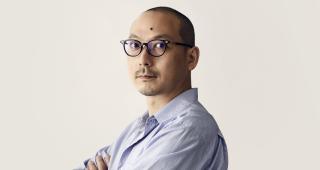
The Space Resembles Who You Are as a Person
WGNB CEO / Launching Curator Baek JonghwanA space is defined as a gap between objects, a gap where a substance or object can exist, an empty gap that can contain a variety of phenomena. A space not only contains visible things, but also the invisible value of a brand. The primary purpose of a commercial space that represents a brand is to promote the brand and sell products. It requires a driving force that persuades consumers to “buy” products. We call this a trend. In addition, a trend reflect the values of people living in this era, so we can say that a design inspired by the trend is a mirror that reflects the times. One thing I want to say for sure is that design is not something grandiose, not just the preserve of designers. It is a story about a space and life that represents you and reflects your values, instead of simply following the trend. Even though home is a place where everything is familiar to you, you move around your furniture or home décor items, hang a pendant light of your choice above the dining table and drink wine with a fancy cheese platter under a warm glow of light. You even arrange a few roses in a vase. All things at home, such as the glass you use to drink water in the morning and the soap and toothbrush you use during a shower, are things you have chosen. Hiroshi Kashiwagi who wrote “Rediscovery of Design” said even this trivial action indicates that a design belongs not only to the person who creates it, or designer, but also the person who uses it, and the true owner of a design is “likableness.” In other words, even the action of selecting an object can be called a design. I would like to define this “likableness” as “personal taste”. As “good taste” originated from the concept of “sound judgment”, you are the one who judges what you like, feel and what you find beautiful in everyday life. I think this enriches each individual's life. Likewise, a design-oriented life is not something grandiose, but an everyday life that reflects your choices, and your space contains all these things. That’s why the space can only resemble a certain person. As a spatial designer, there are a lot of things to consider while pursuing design as a career, but if we look into our daily lives more carefully, we will be able to translate various ideas and inspirations into the language of design.
2022-09-21226 -
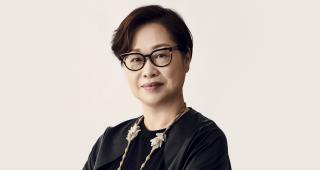
Stunningly Beautiful or Truly Intelligent
EON SLD CEO / Collaboration Curator Jeong MeeCurrently, the global lighting market, including light fixtures, lighting systems and lighting designs, seems to be divided into two categories. The first category includes items that make their presence within the space or home interior. Due to the pandemic that has continued over the past three years, people spend a lot of time in their private space, enjoying lighting along with home interior. However, life is starting to return to a pre-COVID normal, and this transition is bringing changes to our spaces. People started to move into shared spaces and open spaces again, and it seems that lighting is commonly used as an accent item to represent the taste or personality of the space and leave an impression. The design and light texture of light fixtures are considered important, and the materials for light fixtures have become more diverse. They are displayed to show their presence in the space even during the daytime with the absence of light. The design of light fixtures is also becoming more experimental, and there are a lot of lights added around the space, leaving a strong impression on people who enter the space. In addition, as people tend to care more about the color or details of finishes and look for their own story or something unique, vintage lighting that emphasizes originality has recently come into the spotlight. If you take a look at the recent trends in the social media, you can see that people are reinterpreting the use of lights that have been made and used somewhere, at some time, by polishing them again and turning the lights on to illuminate the space, instead of existing brands that got a lot of exposure. As we see things considered to be useless being transformed into useful and beautiful objects in a different space through a different way, it seems that beautiful and good products do not change over time, but their characteristics are determined by the space. Another market is a type of architectural lighting called system lighting, base lighting that is essential in real life. When combined with IoT technology, spatial lighting goes beyond the original role of lighting, such as simply illuminating a space or enhancing productivity, and is starting to be recognized as a home appliance.as IoT technology is grafted beyond the original function of lighting to simply brighten a space or increase productivity. Smart lighting is a lighting system that is most comfortable and optimized for human life by adjusting the illuminance level, color temperature and color of lighting according to the biorhythm of the human body and surrounding conditions. While it focuses on human convenience and energy saving, human centric lighting (HCL) puts emphasis on the most basic physical condition of the human body. From the moment you wake up in the morning and start your day, the lighting activates automatically when the sensor detects your motions, or you can change the brightness or color temperature of the lighting with a mobile phone or remote control device, and the brightness or color temperature of the lighting in the office space, activity space and a comfortable space to rest and relax at night becomes in tune with humans. Lighting is getting smarter, integrating more deeply into our lives to control the light, creating the most suitable space for ourselves and providing the most comfortable life while improving the quality of life.
2022-09-05227 -
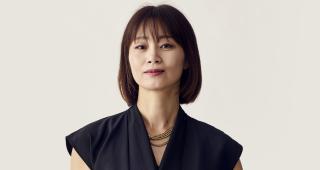
Sustainability for Designers, Makers and Consumers
INNE CEO / Collaboration Curator An Kang-eunAfter looking at the concepts and products proposed by designers and makers as the Collaboration Curator of the 2022 DDP Design Fair, I could tell sustainability, eco-friendly materials, comforting lifestyle, healthy daily life and products that help people express themselves remained at the forefront of their minds. “Sustainability” is a big buzzword that has been around since the 20th century, but it takes on a whole different meaning and importance these days. In Europe, solar panels are planned to be installed to reduce the overall carbon footprint of the lighting industry, plastic products now contain 10-30% of recycled materials, and people are preparing to use natural fibers that are not chemically processed. They are even developing products that break down bacteria with the heat from lights, improve air quality and reuse energy and trying to make mycelium leather from mushroom roots, rather than animal hides, which produce a lot of pollution during the dyeing process. Combining a beautiful design with innovative technology and a commitment for a sustainable future is something designers, makers and consumers can all relate to and take part in. As we are traversing the long, dark tunnel of the pandemic, products that feel comforting and appeal to those who are more conscious of their health are establishing a strong connection with consumers. This has also changed the way how people enjoy recreational activities, such as traveling and camping, escaping the turmoil and humdrum of everyday life. Outdoor products that reflect our changed lifestyle have become more sophisticated and practical and intend to convey a completely different sensibility from the initial planning process. Hygiene has been getting a lot of attention as well as health and immunity due to the impact of COVID-19. Unlike the past, “healthy pleasure” emerged as a major buzzword, suggesting a direction which enables people to enjoy the act of taking care of their own health in an easy and fun way. Another paradigm shift involves the engagement of consumers, as they are more fascinated with being able to directly or indirectly participate in making products that suit their taste and represent their individuality, rather than products that are mass-produced and generally popular with the public. Designers and makers still have a challenge of meeting the needs of consumers who are more familiar and comfortable with contactless technology and finding an appropriate platform to access distribution channels. I hope this commitment remains sustainable in the sense of being on the journey together in the process of discovering eco-friendly materials, commercializing products and allowing end-users to emotionally relate to and take part in the change, even after the life cycle of a product is over. During the preparation for this DDP Design Fair, unfortunately, some designers and makers had to give up further participation in the fair due to flood damage, and I had also witnessed how they were still struggling in the aftermath of COVID-19 and looking for a breakthrough. While looking through the proposals written by designers and makers who participated in the fair, an inspirational message that everyone can relate to flashed across my mind.The product conveys artist Henri Matisse’s positive message passed down to the next generations. The Heart created with the cut-out technique Matisse developed later in his life when he could no longer paint due to his deteriorating health delivers a message to people living in 2022 not to give up and not to lose hope, bringing in “light and happiness”.
2022-08-31228 -
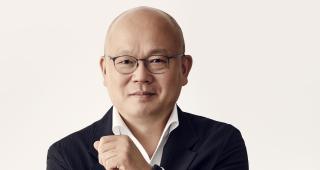
Spaces Reborn with More Personality
Innometsa CEO / Launching Curator Ma JaechullChanges in the furniture and lighting marketDue to the many changes brought to our living and work environments since the COVID-19 outbreak, there has been a growing demand and interest in the home interior market. With more time spent indoors during the COVID-19 pandemic, an increased interest for interior design has also given rise to many new opportunities for the home interior industry. Since COVID-19 has become part of our everyday lives, the demand has slowed compared to the past, but there seems to be steady demand, encouraged by the public’s greater interest and learning. However, coupled with global inflation, rising oil prices and rising exchange rates, Russia’s war in Ukraine is having a negative impact on Korea’s home interior market. All these factors combined led to a decline in Korea’s real estate demand and prices, a nationwide trend of people avoiding moving into a new home, thereby driving the contraction of the home interior market. Changes in furniture trendsThe trends were led by brands representing Northern Europe and Bauhaus design for a while, however, it seems we are now in “a period with no particular trend”. In recent years, simple and understated designs of Northern Europe have become more common. These days, people tend to purchase furniture, lighting and objects with unique designs and various color finishes to change the mood. In addition, we are seeing more designs that boldly use materials with various colors, instead of finishes of steel material and natural wood with an achromatic color scheme. There is a common theory in the fashion world that vivid colors are more popular when the economy gets worse. This can be also applied to the home interior market to some extent. Changes in the fashion and home interior marketIn the COVID-19 era, people have less face-to-fact meetings and gatherings, which is leading to a strong decline in the fashion industry. As a result, fashion-oriented shopping malls are starting to turn to interior furniture, lighting and home décor items and are proposing various collaborations. Some fashion brands even design furniture products and launch them into the market, while some brands showcase fashion and furniture designs at the same time from the very beginning of their launch. In addition, there have been various efforts, such as applying the patterns of fashion designers to furniture. Going global, thinking beyond the domestic marketWe are successfully promoting K-Culture across the world. However, we need high-quality product designs based on ideas to expand our global market reach, breaking away from the passive approach of focusing our design capabilities only on the domestic market. To this end, social infrastructure is required to help Korean designers begin overseas expansion, and national programs should also be put in place so that they can learn from a variety of experiences. Given the unfavorable market conditions, there are still less opportunities for Korean designers to grow their career and chart their own path compared to European designers. With some government support, I hope Korea produces more world-class designers by providing a foothold for designers to grow themselves and stand on their ow
2022-08-24262 -
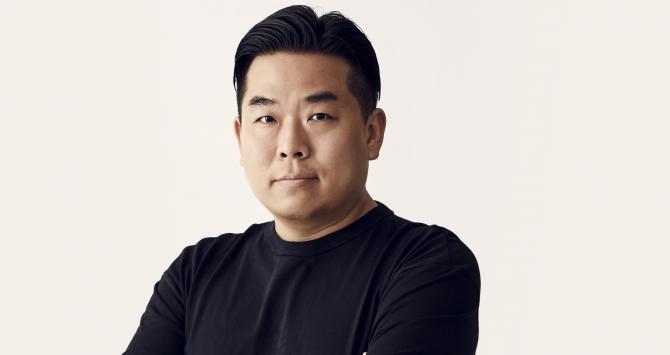
Personal Sense of Beauty Through Space
MAEZM CEO / Collaboration Curator Cho EunwhanI've once heard that it takes three generations to enjoy gourmet food. According to the person who said these words, for the first generation, taste is merely a process of getting nutrients from food. Even if they somehow pursue great taste, their first-hand experience of taste would have been very limited. For them, enjoying great taste would not have been a “process of realizing what a taste for high standards is”, but rather looking for what others find delicious. However, the next generation will become much more familiar with enjoying great taste by building upon the previous generation’s legacy of taste learned by trial and error. Meanwhile, for the third generation, taste is not something that can be pursued, but rather a familiar pastime that can be enjoyed from birth. For them, what is delicious or not tasty is not something that can be easily influenced by other people's opinions. Rather, it is a process of indulging taste buds for the ultimate taste sensation while realizing the original taste of the ingredients. This may seem a bit far-fetched, but in some respects, as someone working in the industry, I think that enjoying and relishing spatial design also goes through a similar process. Enjoying space also refers to the pursuit of the ultimate aesthetic experience, especially in an era where people focus on quality of life rather than bread-and-butter issues, resulting from the country’s economic power or high standard of culture. My main areas of expertise include spatial planning, interior design, architectural design and exhibition space design, which all require a huge amount of budget and time compared to other design fields, so the average age of my clients is relatively high. However, I am starting to feel a subtle change these days. Most of the clients I've met over the past decade were affluent people in their fifties and sixties, but I am recently working with clients who are close to my age. It is obvious to see that the change in demographics of main consumers is driving the shift of capital flows. However, during this process, I feel that the changes in their spatial needs and expectations are taking place at a fast pace. Those who have maintained better conditions to enjoy space for a longer period of time than the previous generation know how to think rationally and make much better choices than the previous generation even in terms of what is formatively perfect. As a result, I could meet quite a few clients who viewed space with a better eye than some of the designers with a complacent attitude. This is a very positive change in the field of spatial design, where the client's perspective can have a greater impact on the outcome than the designer's efforts due to its unique design process. However, extending my previous analogy to this change, it is difficult to conclude that they are the third generation enjoying spatial aesthetics. It is because the countless example images clients bring to explain what they want for their space or the spaces filled with mid-century modern furniture look quite sophisticated, but they do not fully represent their individuality and concerns. As we are seeing more and more hip and trendy places around us these days, this makes me think it would be better if at least a private space, such as a living space, could freely pursue a sense of uniqueness and specialness that represents the occupant, rather than simply being stylish and sophisticated. Those who contemplate and enjoy space do not tend to decorate their space with attractive things commonly seen in fashion magazines. Instead, they try to let their space show a unique vibe so that other people can notice their personality and character at the moment they enter the space. This kind of space may actually look distracting, but it has completeness, which makes it difficult to add or remove something else. Unless you are working as a spatial designer for a living, it would be great to have some time to freshen up ourselves while refining the space around us. The end result of spatial design, a process of focusing entirely on yourself, will eventually lead to a high-quality design that offers an enjoyable experience. Major domestic and international design events such as the DDP Design Fair will provide opportunities that stimulate and promote designers and consumers to discover what suits their unique taste and orientation. These special occasions are opportunities that represent all the thoughts and hard work of those who prepared for the events, so they show the true colors of each and every element, but sometimes various outcomes convey a common message which defines the times in which we live. In this way, we can clearly see how we are different from others, instead of noticing what the current trends are from our surroundings. The time has arrived for us to change our own spaces, just by being ourselves without thinking about others, and enjoy the fascination of spatial design for our own purpose. As a first step to demonstrate your personal sense of beauty through space, I hope you take this opportunity to think about what kind of person you are today and how your space looks now.
2022-08-24241 -
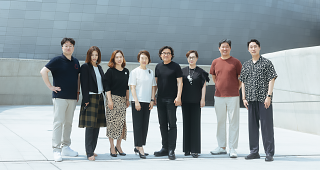
Overall Review of 2021 DDP Design Fair by Curators
Getting ready to take the event to a bigger stage as one of the world’s best awardsThe 2021 DDP Design Fair is coming to an end. Let’s hear from the curators of each category (Furniture, Lifestyle & Living, Lighting, Career, Marketing and Space) about the 2021 DDP Design Fair. The curators have spared no effort to support designers and makers who have worked hard for over a year by pairing them into teams and advising on the curatorial direction.“Seeing is believing”Career Curator Kim Nayoung (Director of Chong Kun Dang Healthcare Design Department)The 2021 DDP Design Fair opened up greater possibilities and certainties against the uncertainties of the future. I believe that the absolute value and essence of design is to create a better world, environment and society, and I am glad to see our efforts were successful. What we could do at this point of our journey was discovering a meaning from our dream by adding reasonable possibilities to the uncertainties of the future. The DDP Young Designer Job Fair was created to encourage young people to think about their future based on the career and life experiences of professionals who are already working in the field. Living a happy life while following your passion will help you to view the field of design from a broader perspective and shape your outlook on the world. The message of “seeing is believing” was demonstrated through the 2021 DDP Design Fair.Achieving design convergence with stability amidst uncertaintiesMarketing Curator Park Jeongho (Vice President of KFDA, Professor of Myongji University)Due to the COVID-19 pandemic, planning and preparing for an in-person event have meant carrying a project in the midst of great uncertainty. This event was especially meaningful since we have witnessed active participation as much as the previous fairs despite the limitation of visitors. In particular, initiating projects aimed at creating jobs for young people through the 2021 DDP Design Fair enhanced the social value as well. Personally, I had high expectations for this fair since I have great interest in researching design-related policies and fostering the growth of the design industry. Convergence between different sectors is now a worldwide trend not only in the design industry but also in other industries. The design industry is also working on a lot of collaborations, such as brand collaborations between different design fields. I think the DDP Design Fair’s matching program is a theme that goes along with this global trend. Since this is an event that involves the government’s support for small business owners, I think the original purpose of the fair should be focused on encouraging participation, both virtual and in-person, of citizens as much as possible.An opportunity that has raised the stature of designFurniture Curator Ha Jihoon (Professor of Kaywon University of Art & Design) This year’s fair holds greater significance since it was hosted in-person, unlike last year. Each field has worked hard to make a greater whole even in difficult situations, and I hope to see great results in the future. When there is consensus about the importance of design, there will be more companies participating in this event and more great results. First of all, we need to pay attention to “accumulation”. There was more responsibility placed on the roles of planning all products of many designers and makers who participated in the 2021 DDP Design Fair and managing the entire process until the products are showcased in the exhibition. As the Furniture Curator, I was responsible for pairing companies that can promote industrial development in the field with designers who can play a role in further developing such companies. It was a shame that the exhibition was unfortunately not held in person last year. People often get the scale of furniture wrong since there is a huge difference between seeing furniture in person and seeing furniture through the screen. There is so much meaning in the fact that we were able to create results with more focus on the physical exhibition. I think this fair served as an opportunity for the field of furniture to achieve further progress by showcasing the actual pieces of furniture to citizens and stakeholders.An opportunity that has added fascination to products through collaborationsLifestyle & Living Curator Han Kyungha (CEO of WOOFER DESIGN)I believe that the 2021 DDP Design Fair was held in line with the purpose of revitalizing the manufacturing industry of central Seoul and further developing the design industry despite the COVID-19 pandemic. The fair was planned and implemented based on two tracks — one for virtual exhibition and one for in-person exhibition — so that more people were able to enjoy the fair through various channels. There were more unique designs grabbing the attention of people compared to the previous year. Furniture pieces made by young designers definitely stood out, especially in terms of quality. Bold material selection and new suggestions for functionality are the best examples that show the true potential of our designs. There are some lifestyle products that are not perfect in terms of quality. This is because those products require complex manufacturing processes and parts and there are wide variations in conditions from manufacturer to manufacturer. I think the Lifestyle & Living category should also focus more on its strengths by narrowing down the scope decisively and keeping quality as the top priority for the next fair.A space filled with stories and participation from various peopleSpace Curator Lee Kanghyun (Professor of Hongik University)Besides the exhibition, I tried to fill the space with more stories and participation from various people. For stories, we created a space for designers where they can share how their design is translated into a product and how it evolved into the final version, and envisioned how the space would blend naturally with the best products selected from the participating teams. What makes this year’s DDP Design Fair special is the unexpected connection and the expansion of relationship. We tried to show the processes of how to create new things with a combination of completely different things. Our top priority was to make the collaboration teams stand out and then represent a new image through collaborations between designers and makers and go beyond by encouraging companies to present a lifestyle, more than just a product.Interesting stories behind products with various materialsLifestyle & Living Curator Sohn Donghoon (CEO of Atelier Sohn)Above all, I would like to thank the chief director and the curators of each category. Since this is the third year of the event, I think the event has made a leap forward in terms of scale and quality. That's why I already feel a greater sense of responsibility for next year's fair. While we prepared for this year's fair, we could see the capabilities of designers and makers who participated in this event. I think our mission is to build a strong relationship with the participants for the fair’s steady growth. This year’s event was held in-person so the curators of each category were able to pay attention to the quality of the actual products and make sure everything went smoothly for the event.A journey of searching for something differentLighting Curator Jeong Mee (CEO of EON SLD) The collaborations based on various ideas are evolving year after year. The fair has always been pursuing diversity and scalability of ideas. From this point of view, the fair is still going through changes and making further progress. This year, the exhibition space was filled with the results of collaborations and a variety of new products showcased by companies. As a result, we were able to see more high-quality products that focused more on the details than usual. I hope all these stimuli serve as a positive influence to designers, manufacturers and small business owners in the future. Furniture was the category that featured the most various ideas and great results. I think the diversity of materials and forms created a perfect balance. We tried to allocate more space for the Lighting category compared to last year and emphasized the importance of having more fun with light and changing the space in various ways. I think Lifestyle & Living was the most challenging category because of its wide variety and diversity. Rather than products that are faithful to the basics and made of recyclable materials, attractive products that are sought after stood out from the rest.
2021-12-06438 -
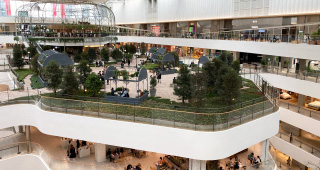
Samhwa Paints Color Design Center’s Color Trend Forecast
SHIFT: 2022-23 Color DirectionsMetaverse, space, flex-pivot, hyper-personalization and ethics are the changes in the global industry that will have a significant impact on our lives in 2022-23.As digitalization is taking place at an unprecedented pace due to the pandemic, the world is heading toward the era of metaverse. Metaverse, which was once considered as a technology of the distant future barely a decade ago, has already begun to be applied to our everyday lives. Each industry is trying really hard to stay ahead of the game and dominate the metaverse technologies and market.One of the biggest changes coincided with digitalization is the change of space. A department store is more than just a retail space. It is becoming a large-scale cultural complex where people can eat out, rest and enjoy culture. Residential space has become the center of all activities. Business environment and lifestyle are becoming more flexible and changing at a rapid pace. There are more people who want to work for IT platform companies instead of large corporations, which used to be dream companies for many people. Virtual influencers created by artificial intelligence started to appear out of nowhere.The increase of single-person households and the acceleration of personalization were already under way, however, this trend was also accelerated by the pandemic. Due to hyper-personalization, companies need to create more targeted and personalized marketing campaigns. This is why data and algorithms hold greater significance these days. ESG (Environment, Social and Governance) is the new buzzword in every industry. Ethical values such as value-based consumption, design for all and circular design have become more important than anything else.Based on such changes in the global industry, I would like to propose five color trends of 2022-23 you definitely should pay attention to.First, Real-worldly Digital.Innovative technologies such as metaverse, virtual reality, augmented reality and blockchain have improved leaps and bounds in recent years. You can witness the real world being digitalized and the real world mixed with the digital world. That’s why surreal digital colors are also used in real spaces to give off a more modern and innovative feel. They imply positive expectations towards the future-oriented technology and represent immersive, sensual and interactive experiences into the digital world. This palette includes a combination of colors mixed with light, which symbolizes digital elements of virtual experience, high-tech and fantasy mood, and digital colors that are more visible by the use of lighting and metallic materials.Second, Feeling Well.This palette gives a comfortable and bright feeling, and a sense of stability based a pleasant feeling of comfort. Whitish space and products always create a bright atmosphere and seem to improve hygiene and immunity. Clear and transparent pastel colors, and the subtle gradation color scheme are the basic main colors. Transparent liquid-like materials, reflective effects of finishing and digital effects are used as well.Third, New Way.This color palette makes everyday life new and inspires imagination into existing designs. These colors add individuality to all spaces such as residential spaces, retail spaces and public spaces, and create simple but unique styles. You can try new things with bold color variations that inspire creative imagination even into a space filled with ordinary and everyday materials.Fourth, Chord Keeping. This color palette represents the coexistence of opposing values such as technology and nature, premium and handmade. Due to the importance of ESG and the growing demand for a balanced coexistence of cities and nature, there is a lot of research and cases about eco-friendly buildings. Exposing the patterns of upcycled materials is a trend that has been going on for several years. It implies the connection and harmony between cities and nature, wellness based on eco-friendly designs and sustainability. It is expressed with natural colors and materials that capture the properties of the fertile nature, robustness and durability.Fifth, Still Placid.This color palette represents calmness, serenity and placidness. The recreational and healing effect of nature has become the most essential element, especially in the pandemic era, and an important element in our daily lives. Toned-down pastel colors that create a comfortable and cozy vibe give off a soft and cozy feeling. It uses the basic beige and gray options, as well as greenish gray and bluish gray colors, and harmonizes the tone-in-tone color scheme, warm materials and simple design.“SHIFT: 2022-23 Color Direction” proposes a color direction that can be applied to each industry including architecture, interior, product design and digital content. We hope this serves as a useful guide and offers inspiration to experts in each industry.
2021-12-06520







